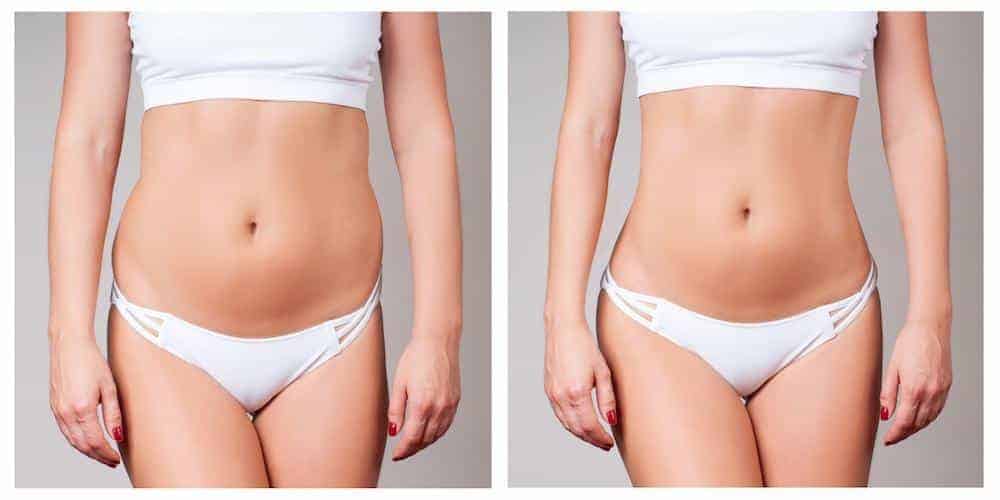Laser-Assisted Liposuction Recovery Time: Steps & Tips
Understanding Laser Liposuction
Technology Difference
Laser liposuction, a cosmetic procedure, uses laser energy to break down fat cells and address loose skin and cellulite as part of liposculpture. This technology is different from traditional liposuction, which relies on physical force, unlike noninvasive laser lipolysis and liposculpture for fat cell removal and laser lipolysis results. The laser fiber is inserted through a small incision. It heats the fat cells, causing them to liquefy. This makes it easier to remove the fat with a thin tube called a cannula during liposuction procedures.
Benefits
Laser-assisted liposuction offers several benefits over traditional methods. Reduced recovery time is one of the key advantages. Patients often return to normal activities within a few days after noninvasive laser lipolysis. Bruising and swelling are also minimized due to the less invasive nature of the noninvasive laser lipolysis procedure. The heat from the laser promotes collagen production, which tightens the skin, similar to dermal fillers.
Ideal Candidates
Not everyone is a good candidate for laser liposuction. Ideal candidates are close to their target weight but have stubborn fat pockets suitable for noninvasive laser lipolysis. They should be in good overall health without serious medical conditions for noninvasive laser lipolysis. Realistic expectations are crucial for satisfaction with the results. Consulting an expert laser liposuction surgeon can help determine if this procedure is right for you.
Recovery Time
Recovery from laser lipolysis is generally quicker than from surgical liposuction. Most patients experience mild discomfort after laser lipolysis and can resume light activities within 48 hours. Full recovery usually takes about two weeks. Following post-operative instructions for laser lipolysis is essential for optimal results and minimizing complications.
Immediate Aftercare Steps
Compression Garment
Wearing a compression garment is essential. It should be worn immediately after the procedure. This garment helps reduce swelling after laser lipolysis and supports the healing process. It also aids in shaping the treated area.
Most surgeons recommend wearing it for at least 4-6 weeks after laser lipolysis. This duration can vary based on individual recovery rates. The garment must fit snugly but not too tight.
Pain Management
Managing pain and discomfort is crucial in the first few days post-surgery, especially after laser lipolysis. Over-the-counter pain relievers like ibuprofen can help. For severe pain, doctors may prescribe stronger medications.
Applying cold compresses to the treated area after laser lipolysis can also reduce swelling and alleviate pain. Avoid strenuous activities during this period to prevent complications.
Incision Care
Keeping incision sites clean is vital to prevent infection. Gently wash the areas with mild soap and water. Pat them dry with a clean towel.
Do not apply any creams or ointments unless advised by your surgeon after laser lipolysis. Change dressings as instructed by your healthcare provider. Signs of infection after laser lipolysis include redness, warmth, or discharge from the incision sites.
Hydration and Diet
Staying hydrated speeds up recovery. Drink plenty of water throughout the day. A balanced diet rich in vitamins and proteins aids in tissue repair.
Avoid alcohol and caffeine as they can dehydrate you. Eating small, frequent meals can help maintain energy levels and promote healing, especially after laser lipolysis.
Activity Restrictions
Rest is important in the initial recovery phase. Light walking is encouraged to improve circulation after laser lipolysis, but avoid heavy lifting or intense exercise. Gradually resume normal activities as per your doctor’s advice.
Listen to your body and avoid pushing yourself too hard. Follow your surgeon’s guidelines on when to return to work or other regular activities after laser lipolysis.
First Weeks of Healing
Swelling and Bruising
Significant swelling is common in the first week. It peaks around day three or four. Bruising may appear on the inner thighs and other treated areas after laser lipolysis. By the end of the second week, swelling decreases noticeably. Bruising also begins to fade.
Activity Plan
Light activities are crucial after the first week. Walking helps reduce edema and improves circulation. Avoid strenuous exercises to prevent excess bleeding. Gradually increase activity levels as healing progresses.
Dietary Adjustments
A balanced diet supports recovery. Include foods rich in vitamins C and E for skin healing. Drink plenty of water to stay hydrated. Supplements like arnica can reduce bruising and swelling.
Skin Firming
Using compression garments aids in free skin firming. These garments help the skin adhere to new contours. Wear them as advised by your doctor for best results.
Monitoring Recovery
Regular check-ups are essential during this period. They ensure there is no excess swelling or complications. Follow all medical advice closely to promote smooth healing.
Long-Term Care Tips
Healthy Lifestyle
Maintaining a healthy lifestyle is crucial after laser liposuction. Eating a balanced diet helps preserve the results. Include fruits, vegetables, lean proteins, and whole grains. Avoid processed foods and sugary drinks.
Regular exercise is also important. Aim for at least 30 minutes of moderate activity most days. Walking, swimming, or cycling are good options. These activities help keep the weight off and improve overall health.
Skin Care
Proper skin care can enhance and prolong the aesthetic benefits of laser liposuction. Moisturize daily to keep your skin hydrated. Use products with ingredients like hyaluronic acid or glycerin.
Exfoliate regularly to remove dead skin cells. This promotes cell turnover and keeps your skin smooth. Gentle exfoliation once or twice a week is sufficient.
Protect your skin from the sun. Use sunscreen with at least SPF 30 every day. UV rays can damage your skin and affect the results of the procedure.
Follow-Up Visits
Regular follow-up visits with your surgeon are essential. These visits help monitor your recovery and ensure everything is on track. Your surgeon can identify any issues early and provide solutions.
Typically, follow-up appointments are scheduled at:
- One month post-surgery
- Three months post-surgery
- Six months post-surgery
During these visits, your surgeon will check for any complications. They will also evaluate the long-term results and make recommendations if needed.
Emotional Well-being
Taking care of your emotional well-being is just as important. Feeling good about your body can boost confidence and overall happiness. Surround yourself with supportive friends and family.
Engage in activities that make you happy. Hobbies, social events, or even relaxing at home can improve your mood.
Tips for Speedy Recovery
Lymphatic Massage
Gentle lymphatic massage can help reduce swelling. It also speeds up the healing process. Use light pressure and circular motions. Focus on the areas around the incision sites. Perform these massages daily for best results.
Stay Hydrated
Drinking plenty of water is crucial. Staying hydrated helps flush out toxins. It supports your body’s recovery. Aim for at least eight glasses of water each day. Avoid sugary drinks and caffeine.
Balanced Diet
Eating a balanced diet is essential. Include foods rich in vitamins and minerals. Vitamins A, C, and E aid in healing. Minerals like zinc support tissue repair. Leafy greens, fruits, lean proteins, and nuts are good choices.

Adequate Rest
Adequate rest is vital for recovery. Your body needs time to heal. Sleep at least 7-8 hours per night. Take short naps during the day if needed. Avoid strenuous activities for a few weeks.
Follow Doctor’s Advice
Always follow your doctor’s advice. They know what’s best for your recovery. Take prescribed medications as directed. Attend all follow-up appointments.
Pain Management
Managing pain is important for a faster recovery time. Use pain relievers prescribed by your doctor. Apply cold compresses to reduce discomfort.
Wear Compression Garments
Wear compression garments as instructed. These garments help minimize swelling. They also support proper healing of tissues.
Avoid Smoking and Alcohol
Avoid smoking and alcohol during recovery. Both can slow down the healing process. They may also increase the risk of complications.
Gentle Exercise
Engage in gentle exercises after consulting your doctor. Light walking can improve blood circulation. It helps prevent blood clots and speeds up recovery.
Monitor Incision Sites
Keep an eye on your incision sites. Look for signs of infection like redness or unusual discharge. Contact your doctor if you notice any issues.
Recovery Timeline Expectations
First Week
Patients should expect mild discomfort and swelling. Rest is crucial during this period. Avoid strenuous activities and focus on gentle movements.
Compression garments must be worn day and night to help reduce swelling. These garments also support the treated areas. Follow your surgeon’s advice closely.
Second Week
Swelling begins to decrease. Bruising may still be present but will start to fade. Patients can resume light activities, such as walking.
Returning to work depends on the nature of your job. Desk jobs may be manageable, but physical jobs might need more time off. Consult your doctor for personalized advice.
Third Week
Most patients feel significantly better by now. Swelling continues to subside, and bruising is almost gone. Light exercises like walking can be increased.
Continue wearing compression garments, but you may not need them at night anymore. Check with your surgeon before making changes.
Fourth Week
Patients usually return to most normal activities by this stage. Swelling should be minimal, and pain is rare. You can start more moderate exercises like jogging or yoga.
Compression garments might only be needed during the day. Always confirm with your surgeon before stopping their use entirely.
Fifth and Sixth Weeks
By weeks five and six, patients often feel fully recovered. Swelling should be almost completely gone, allowing you to see more of the final results.
More intense workouts can be resumed, but always listen to your body. If any pain or discomfort arises, scale back your activity level.
Two Months Onwards
Patients typically feel back to normal by the two-month mark. All regular activities, including heavy lifting and intense exercise, are generally safe to resume.
The final results of the procedure become more visible as residual swelling disappears. Follow-up appointments with your surgeon are important for monitoring progress.
Common Recovery Questions Answered
Compression Garments
Compression garments are crucial after laser-assisted liposuction. Patients typically need to wear these garments for 4-6 weeks. The exact duration depends on the surgeon’s advice and individual healing rates.
These garments help reduce swelling and support the new body shape. They also improve blood circulation, which speeds up recovery. Patients should follow their surgeon’s instructions on how long to wear them daily.
Pain Levels
Many worry about pain after surgery. Most experience mild to moderate discomfort rather than severe pain. Surgeons often prescribe pain medication to manage this discomfort effectively.
Over-the-counter pain relievers like ibuprofen can also help. It’s important to take medications as directed to avoid complications. Keeping in touch with the healthcare provider ensures proper pain management.
Scar Visibility
Scars are a common concern for those considering surgery. Laser-assisted liposuction usually leaves small, less noticeable scars. Surgeons make tiny incisions, which heal better than larger ones.
To minimize scar appearance:
- Keep the incision sites clean and dry.
- Apply recommended ointments or creams.
- Avoid sun exposure on the scars.
- Follow all post-op care instructions.
Most scars fade significantly within a few months.
Maintaining Results After Recovery
Balanced Diet
A balanced diet is crucial for maintaining liposuction results. Consuming a variety of nutrients helps the body function well. Focus on eating fruits, vegetables, lean proteins, and whole grains. Avoid processed foods and sugary drinks.
Staying hydrated is also important. Water helps flush toxins from the body. Aim to drink at least eight glasses of water per day. This keeps your skin healthy and supports overall wellness.
Regular Exercise
Regular exercise helps maintain the effects of laser-assisted liposuction. Aim for at least 30 minutes of moderate activity most days of the week. This can include walking, swimming, or cycling.
Strength training also plays a key role. It helps tone muscles and maintain a sculpted appearance. Include exercises that target different muscle groups.
Managing Weight Fluctuations
Weight fluctuations can affect the results of liposuction. Monitor your weight regularly to avoid significant changes. Small, consistent efforts are more effective than drastic measures.
If you notice weight gain, adjust your diet and exercise routine promptly. This prevents fat from accumulating in treated areas. Maintaining a stable weight ensures long-lasting results.
Healthy Lifestyle Choices
Healthy lifestyle choices enhance and prolong the effects of liposuction. Avoid smoking as it affects skin elasticity and healing. Limit alcohol consumption to reduce unnecessary calorie intake.
Getting enough sleep is essential too. Aim for 7-9 hours per night to support overall health. Good sleep habits help regulate hormones that control hunger and metabolism.
Skin Tightening Options
After recovery, some may seek additional skin tightening options to enhance results. Non-surgical treatments like radiofrequency or ultrasound therapy can be effective.
Consult with your doctor before starting any new treatments. They can recommend safe and appropriate options based on your needs.
Post-Procedure Care
Post-procedure care is vital for maintaining results. Follow all instructions given by your surgeon carefully. Attend follow-up appointments to monitor progress and address any concerns.
Wearing compression garments as advised can help with swelling and support healing. This ensures the best possible outcome from the procedure.
Final Remarks
Laser-assisted liposuction offers a promising path to achieve your body goals with a smoother recovery. From immediate aftercare to long-term maintenance, following the outlined steps ensures optimal healing and results. Trust the process, listen to your body, and give yourself the time needed to recover fully.
Ready to take the next step? Consult with your healthcare provider to discuss your options and personalize your recovery plan. Your journey to a more confident you starts now. Don’t wait—embrace the new you today!
Frequently Asked Questions
How long does it take to recover from laser-assisted liposuction?
Recovery typically takes 1-2 weeks for initial healing. Full recovery can take up to 6 months.
What are the immediate aftercare steps following laser liposuction?
Rest, hydrate, and wear compression garments. Avoid strenuous activities.
Can I return to work after laser-assisted liposuction?
Most people return to work within a week. Consult your doctor for personalized advice.
Are there any long-term care tips post-laser liposuction?
Maintain a healthy diet and regular exercise. Follow up with your surgeon.
What should I expect in the first weeks of healing?
Expect swelling, bruising, and mild discomfort. Follow aftercare instructions strictly.
How can I speed up my recovery process?
Stay hydrated, eat nutritious foods, and follow all medical advice.
Will I need follow-up appointments after my procedure?
Yes, follow-up appointments ensure proper healing and address any concerns.






